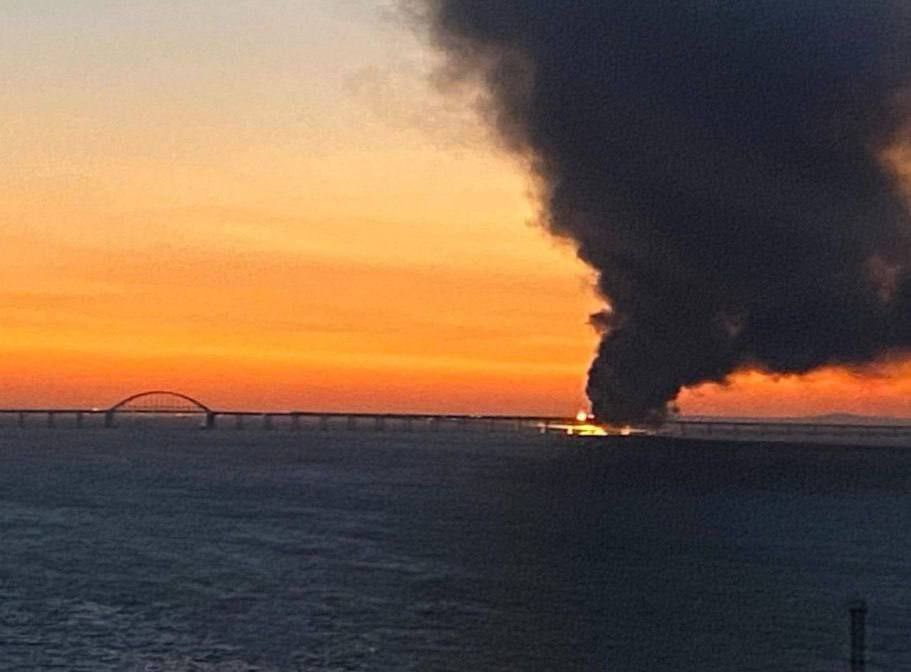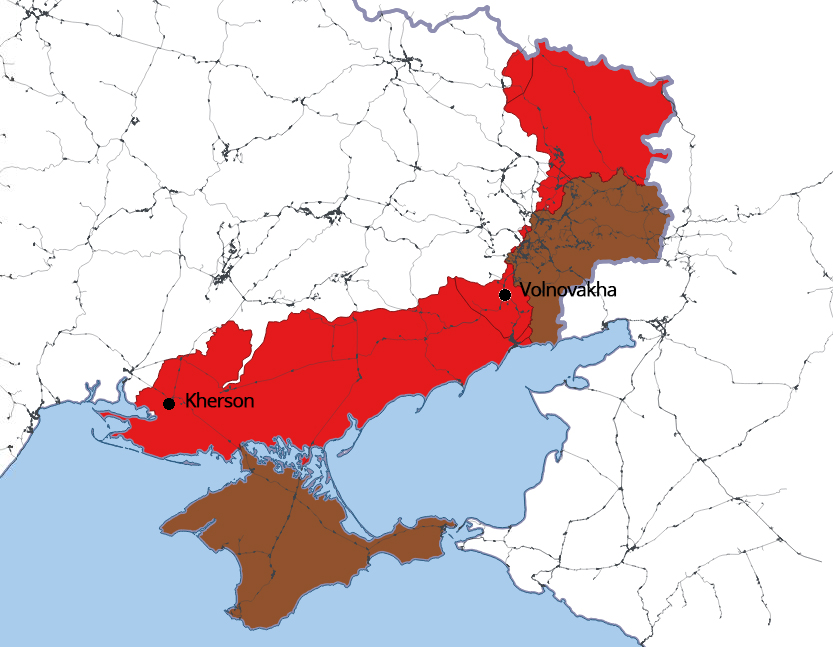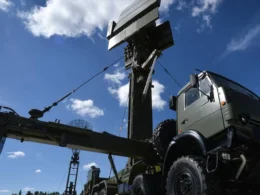The first strike on the Crimean Bridge on the morning of October 8, 2022, just a day following Vladimir Putin's 70th birthday celebration, featured a truck laden with explosives, expertly wrapped in plastic film. Ukraine launched a second assault on the bridge during the night of July 17, 2023, utilizing maritime drones, subsequently coined the "Marine Baby" operation.
The NV magazine has pieced together these historical events by engaging in conversations with Vasyl Maliuk, the head of Ukraine's Security Service (SBU), who recently shared insights on the second strike with CNN.
Maliuk stressed that these strategic endeavors were exclusively the result of Ukraine's meticulous planning, emphasizing the absence of involvement from foreign intelligence agencies. "I, alongside two trusted colleagues, were at the helm of the planning and execution of the bridge operation," Maliuk recounted to NV, referring to the initial attack.
A deep dive into Ukraine's expertly orchestrated first strike
According to Maliuk, the blueprint for sabotaging the Crimean Bridge was conceptualized as early as the spring of 2022. Myriad strategies were considered, encompassing transporting explosives within cargo wagons (yet such vehicles were exclusively for military use by the Russian forces) or concealing them within barrels of oil (which didn't guarantee subtlety). Ultimately, Maliuk devised a stratagem involving explosives enshrouded within cellophane, masquerading as large rolls to evade suspicion.
The SBU calculated the thickness of the cellophane layer required to outfox customs scanners inspecting metal cylinders laden with a concoction of hexogen. These seemingly innocuous "rolls" efficiently filled an entire container, collectively equating to 21 tons or 42 Russian "hypersonic" Kinzhal missiles in TNT equivalence.
The logistical journey of transporting the payload from Ukraine to the bridge was rife with challenges. Maliuk refrains from divulging specifics of this perilous route, reiterating that the SBU exclusively orchestrated these feats, without external assistance.
Another critical consideration for the SBU was the existence of countermeasure equipment situated near the Crimean Bridge, designed to thwart GPS coordinates emanating from explosive devices targeted at specific locations. Maliuk's team engineered a complex system to thwart these countermeasures, resulting in the successful flight of the cargo during the early hours of October 8, 2022, approximately halfway across the bridge.
From his office, Maliuk intently monitored the explosion in real-time through a surveillance camera, although the precise location of the camera remains undisclosed.
Maliuk recounted, "We traversed seven circles of hell and employed numerous individuals. The Russians apprehended 22 people, accusing them of complicity in a terrorist act. However, in reality, they were nothing more than ordinary Russian smugglers."
Ukraine's continuation of strikes on the Crimean Bridge
Following the initial triumph, the SBU promptly shifted focus to devising a subsequent attack on the bridge. A pivotal role in this endeavor was played by the head of a military counterintelligence department – an officer operating under the codename Hunter – who contributed significantly to the creation of naval drones.
Ukrainian intelligence operatives engineered remote-controlled kamikaze watercraft infused with explosives. These innovative vessels, constructed from a radar-eluding material, featured three control mechanisms and self-destruct functionality when deemed necessary.
In real combat conditions, these maritime drones made their debut by assaulting Russian Black Sea Fleet vessels, namely the Admiral Makarov and Admiral Essen frigates, situated in the Sevastopol bay during the previous fall. Post-operation, Admiral Essen underwent extensive repairs.
Recognizing the drones' limitations in terms of incapacitating substantial vessels, the SBU augmented the explosives' payload to 850 kg of hexogen. The control systems underwent upgrades, yielding an entirely new maritime "hunter."
Collaborating with Navy Commander Oleksiy Neizhpapa, Maliuk orchestrated a synergistic partnership between the Navy and intelligence agencies to devise a maritime operation aimed at undermining the Crimean Bridge.
The drones underwent continuous enhancements, even boasting two long-range Shmel-M rocket launchers on their hulls. Numerous other innovations were incorporated, although the SBU has elected to withhold the finer intricacies.
In mid-July, the SBU and the Navy triumphantly launched the drones into open waters, steering them toward the designated target. Precision strikes by these drones impacted a bridge support, causing a section of the roadway to collapse, as evidenced by subsequently disseminated photographs.
In Maliuk's words, "For two nights, sleep eluded us – we remained vigilant over the drones every passing minute. Our enthusiasm was so pronounced that we had to pacify our team members to prevent them from over-piloting the drones.
Upon the explosion, jubilation reverberated within the team – our collective tension had reached a zenith. Truthfully, I offered prayers for the operation's success. And as the drone detonated, so did our exuberance."




